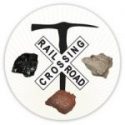The following photographs show what a location looks like today where a photograph had been taken in the past during the era of the Birmingham Mineral Railroad. NOTE: The current photograph may have been taken at a slightly different angle or direction due to re-sculpturing of the landscape or different placement of a roadbed.
See also the “General Historic Photographs” page on this website.
NOTE: Generally, clicking on an image will enlarge it for better viewing.
English Village:
THEN:
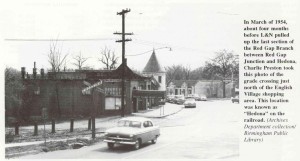
Source: Birmingham Public Library Archives
NOW (Can you find the roof of the turret and the awning hidden behind the trees?):
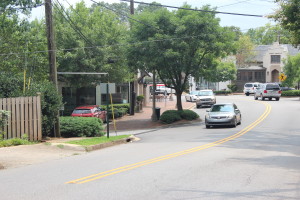
L&N Passenger Station (Union Station) in downtown Birmingham was used by the BMRR for its passenger service.
THEN — Several views:
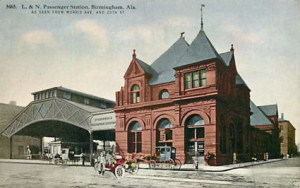
Source: Bhamwiki
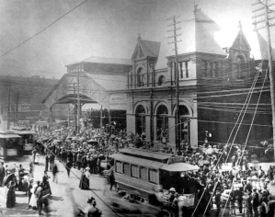
Source: Bhamwiki
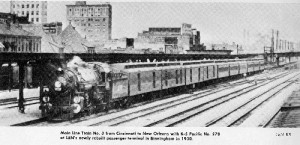
Source: BhamRails John Stewart
NOW — Present-day Amtrak still uses the same platform and roof structure.
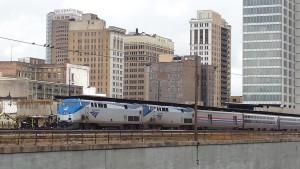
Birmingham Mineral Railroad crossing over “Old Montgomery Highway” below Vulcan:
THEN — Two Views Looking South:
Top photograph below is view of BMRR crossing over Old Montgomery Highway looking south toward Homewood in 1915. Note streetcar tracks on right side of dirt street.
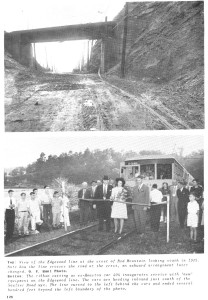
Source: O. V. Hunt photo — Hudson128
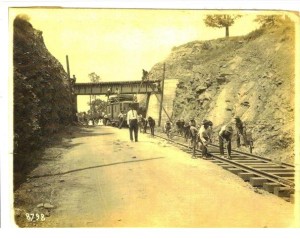
Source: Bobby Raffield
NOW — Looking South:
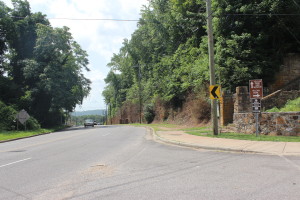
THEN — NOTE: Concrete bridge support on left (barely visible):

Source: Bobby Raffield
NOW — Looking Northeast:
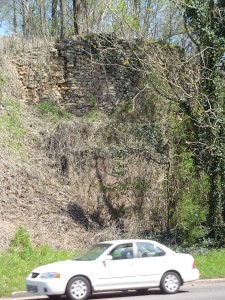
Source: John Stewart
THEN — Two Views:
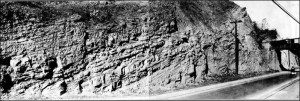
![BMRR looking northwest from near end of bridge below current Vulcan Park. [not confirmed] January 1910. Source: Bobby Raffield](https://bham-mrr.com/wp-content/uploads/2015/07/BMRR-construction-looking-west-from-the-present-site-of-Vulcan-January-1910--300x232.jpeg)
Source: Bobby Raffield
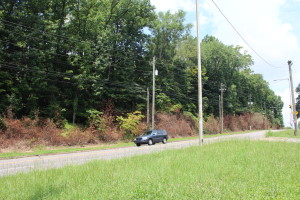
THEN — Vulcan Statue in pieces beside BMRR tracks in February 1905 before the statue was erected at its present location:
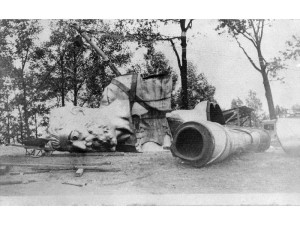
Source: http://visitvulcan.com/about/timeline/
NOW — Ironically, the Vulcan Statue was erected next to, and just above, the BMRR tracks in another location.
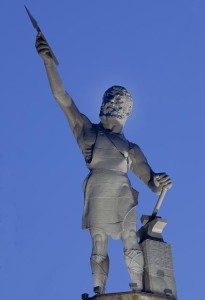
Source: www.loc.gov
Oporto Road near Crestwood Boulevard:
THEN:
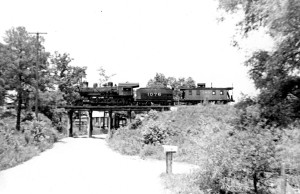
NOW:
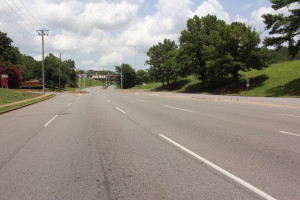
Red Gap in Irondale:
THEN — View looking West:
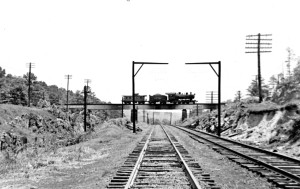
THEN — MORE RECENTLY (1989) — View looking East:
NOTE in bottom center of photograph the BMRR Red Gap Branch former bridge/trestle abutment made of cut stones and dating from 1888.
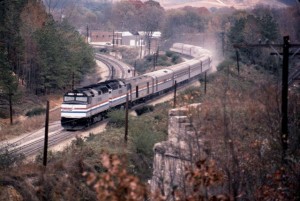
(Photo by Marvin Clemons)
THEN — View looking East:
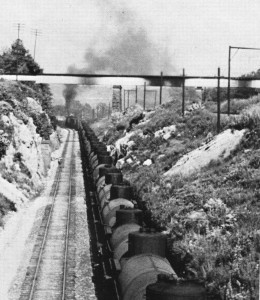
Photo courtesy of Marvin Clemons
NOW — View looking East:
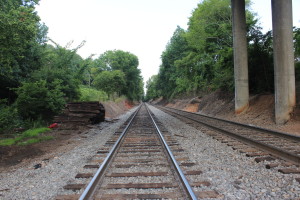
Elevated views of Red Gap in Irondale:
THEN — Two views:
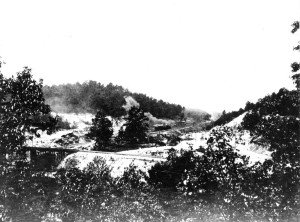
Source: Marvin Clemons
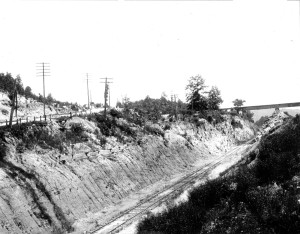
Source: Marvin Clemons
NOW — Two views:
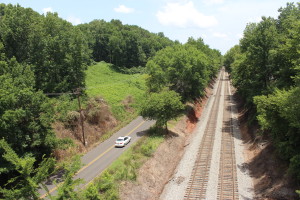
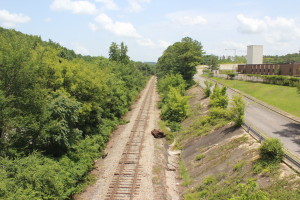
Sadler Gap — Highway 11 / Gadsden Highway near where Interstate 59 crosses it:
THEN:
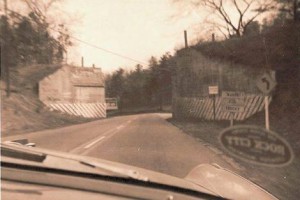
Source: Bobby Raffield
NOW:
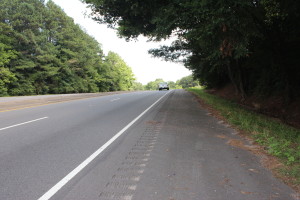
Ensley Furnaces
THEN:
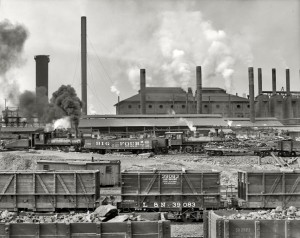
Source: SHORPY 4a09958a
NOW:
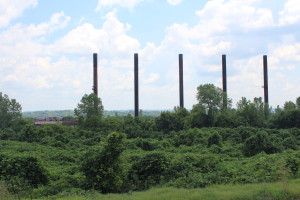
James Lowery, July 26, 2015
ACIPCO (American-USA, formerly American Cast Iron Pipe Company)
THEN — 1946 — Prior to construction of large building with red ACIPCO logo as shown in the “Now” photograph:
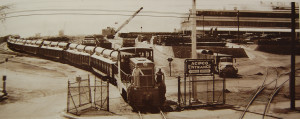
NOW:

Trussville Blast Furnace and Coke Ovens
THEN:
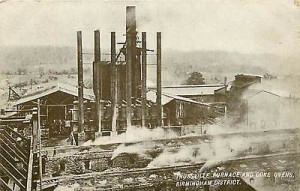
NOW:

Bessemer Passenger Depot and Freight Depot:
THEN — Photograph and Map/Diagram:

Source: Bessemer Hall of History
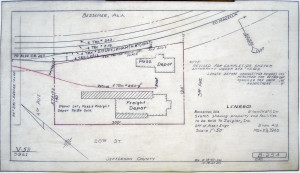
Source: Tony Howe
NOW — Two Views:
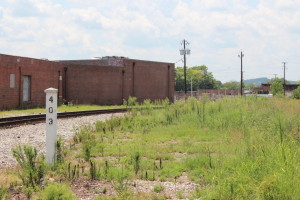
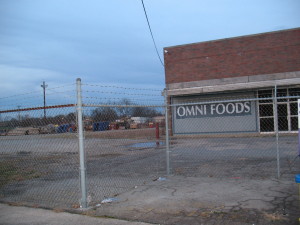
Woodlawn Depot:
THEN — Two Views:
After it was re-purposed and housed a Paint, Roofing, & Supply Company:
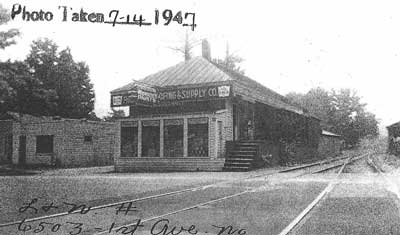
As it appeared in 1996:
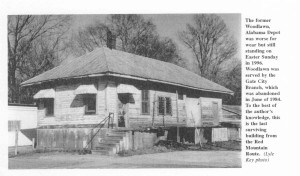
Source: Lyle Key
NOW — Houses the Boone Library at the Heart of Dixie Railroad Museum, Calera, Alabama:
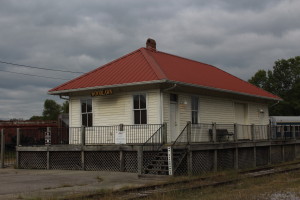
Helena Depots — There were two different depots in Helena. The depot shown here as “Then” was built in 1908 and no longer exists. In the “Then” photograph shown here of that 1908 depot, the L&N BMRR tracks are the ones on the left (closest to the building) with the parked caboose. The freight house and depot depicted here as “Now” was built in 1872 at a location different from its current location. That 1872 freight house and depot is still in use today but has been re-purposed as The Depot Deli and Grill which is located beside the active railroad tracks in Old Town Helena.
THEN — 1908 Depot
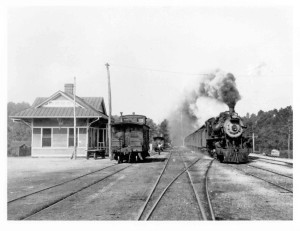
Source: Ken Penhale
NOW — 1872 Freight House and Depot now re-purposed as a restaurant.
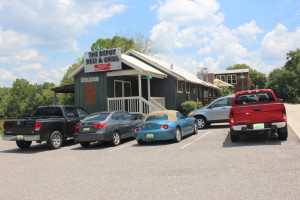
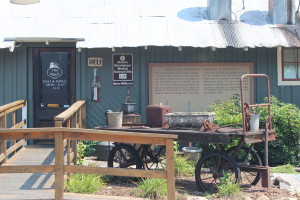
Altoona, Alabama, Depots — There were two different depots in Altoona. The first depot shown below as “Then” was the first depot and no longer exists. The second depot shown below as “Then” was the second depot as it appeared in the 1960s, and it also no longer exists. The site shown as “Now” is where the second depot was located and possibly the first depot also.
THEN — First Altoona, Alabama, Depot — May 1902
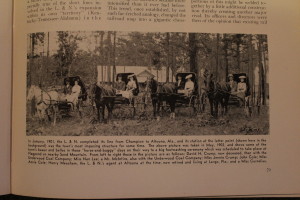
THEN — Second Altoona, Alabama, Depot as it appeared in the 1960s.
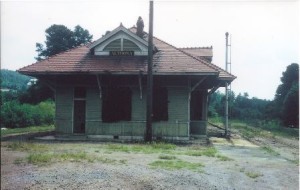
Source: Ryan Cole
NOW — Site where second Altoona, Alabama, depot was located (and possibly the first depot also)
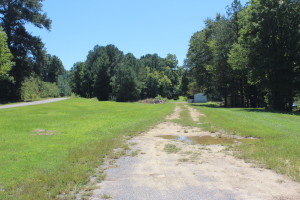
James Lowery, August 25, 2015
